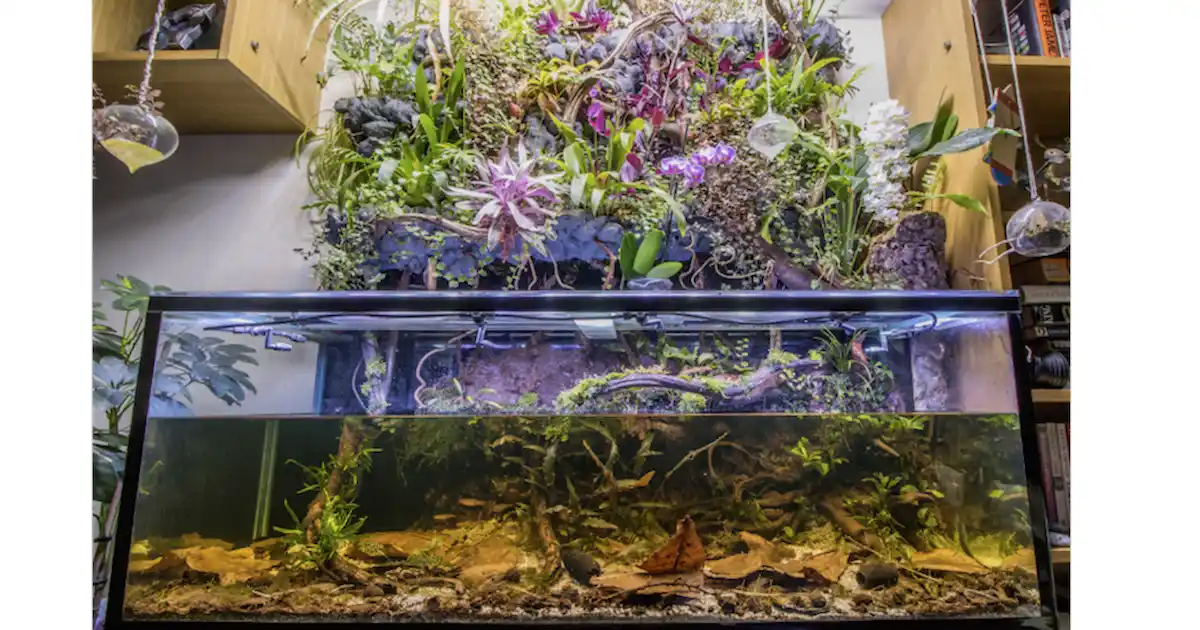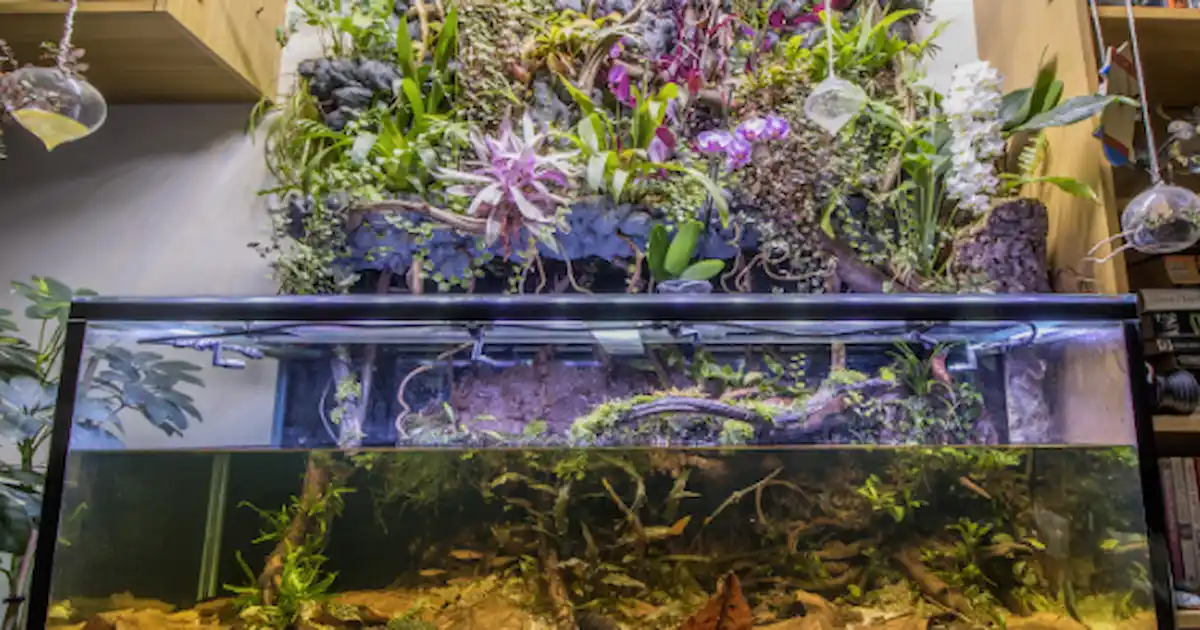Something you definitively need to consider is the water-retaining property of the growing media you are going to use. Since such a wall with pots has quite a media volume that needs to be saturated with water, this requires a certain amount of water volume. There will be certain water saturation and retention followed by a drain. Pumping the water in will obviously empty the tank, the media slowly saturates and then starts to drain back into the tank. Then you need to top off the tank again to its desired water level. Thus there will be an amount of water in the tank and in the wall.
Then calculate the needed volume the wall retains and the volume it drains again when the pump stops and make sure that the tank will not flood with water coming from the drainage. Some growing media retain more water than others and also drain slower and longer.
For example, fill a sponge with water, stop the water flow into the sponge then gravity takes over and see how long it takes before the sponge stops releasing water. Then multiply this x 49 sponges as the number of pots the wall in the picture holds.
Also if you would do the suggested watering in intervals with a timer. You still drain the tank to fill the pots that slowly runs back again. In this cycle, you will have a constantly changing water level in the tank.
Could be a very natural looking feature draining flooding again with water raining back. But you would need quite a large tank for a large planted wall to make this change in water level less drastic. Thus for small volume setups, I don't think this would be very practical.
Another issue could be when the water is constantly fertilized you will get quite some salts (crystals) to build up in the planted media... At some point, it gets too much and will burn the plants. Thus for an aesthetical showpiece, it won't be a very long term success if the media isn't flushed and cleaned from salts buildup regularly. Then you would need to flush it now and then with non fertilized water, and this actually will flush out rather mineral richer water again draining to the tank. Thus quite some parameter differences and EC/PH swings in water contents. No idea how feasible this will be if sensitive livestock is in play?
In aquaponic setups that are used for growing herbs and other edibles, they will be harvested at one point and start fresh with new materials. They don't have to think about it if old growing media isn't reused.
I guess considering maintenance issues a much better approach would be to separate it. Build a sump behind the aquarium with a planted wall.
🙂
Then also the water level issues will reside in the sump and not in the aquarium.
Something like this.
View attachment 173368


 www.practicalfishkeeping.co.uk
www.practicalfishkeeping.co.uk





